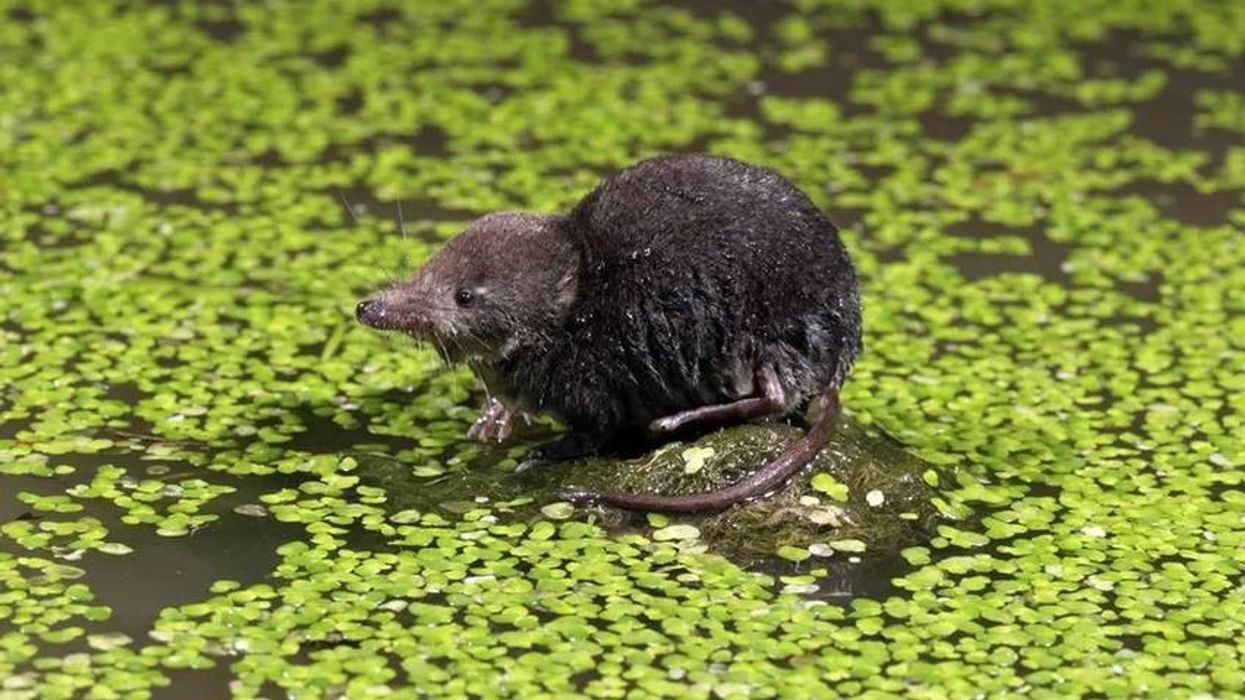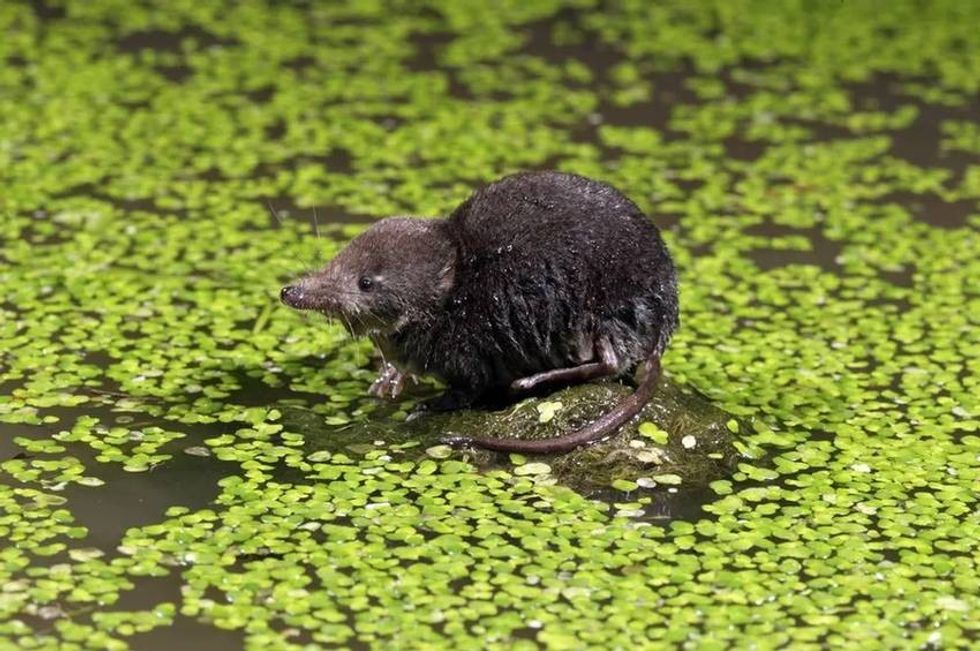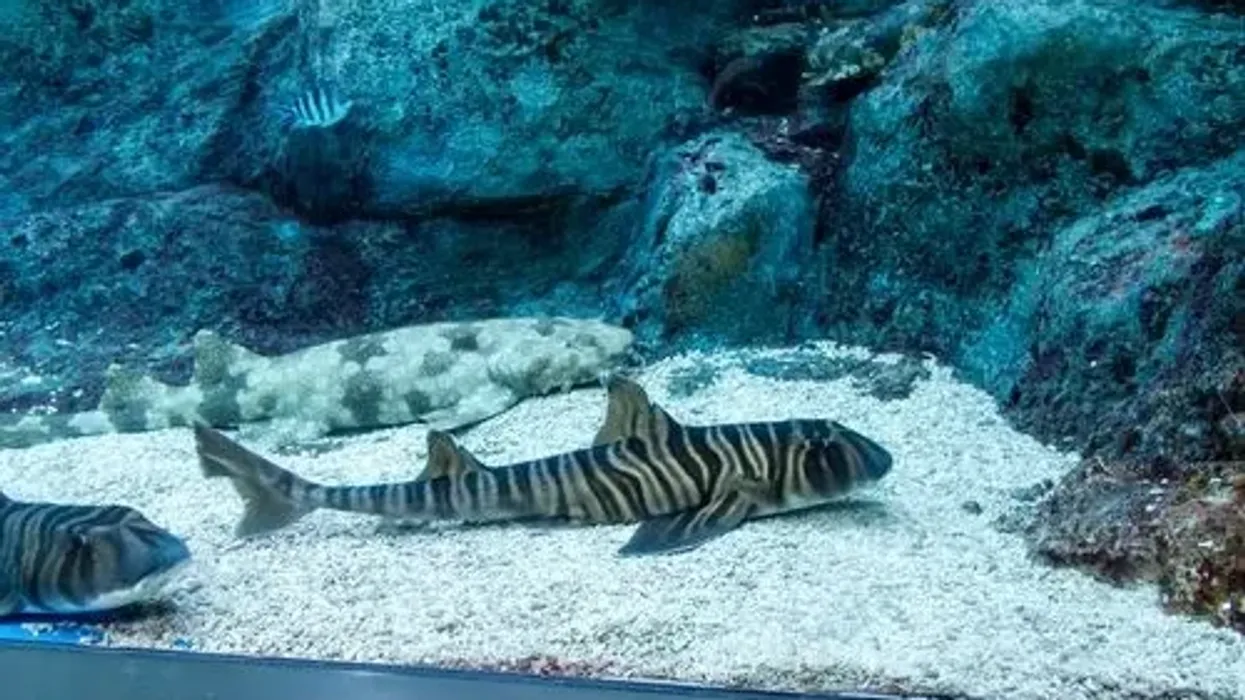Rats are some of the most intelligent and friendly species around, but there are some creatures you should always avoid! One such example is the Water Shrew.
It is an extremely unique member of the rat family and forever known as one of the hungriest creatures around. And with good reason too! They are constantly on the move, with movements so fast they can make at least 12 moves in just a second!
With such movement comes a voracious, unmatched appetite that forces them to be constantly feeding on anything they can. In fact, they eat so much, that if they do not eat for some hours, they will die due to starvation.
These creatures find their homes close to the water, where there is plenty of food to eat and places to hide. Their feet help them dig holes, run around, and even walk on water thanks to the air bubbles in their feet!
If that not enough, these strange creatures are also equipped with venom strong enough to kill 200 mice in just one day. With so many different things to know about this dark-colored, white-faced, and small shrew, this is one interesting creature indeed!
Read on to know everything about the water shrews, or do check out the jerboa and the takin too!
Water Shrew Interesting Facts
What type of animal is a Water Shrew?
Water Shrews are a type of rat.
What class of animal does a Water Shrew belong to?
Water Shrews belong to the class of mammals.
How many Water Shrews are there in the world?
Shrews are usually ranged from 5-30 Water Shrews per hectare.
Where does a Water Shrew live?
Shrews are one of the hungriest predators on the earth. They are found on five continents in different types of habitats.
What is a Water Shrew's habitat?
Usually, Water Shrews live in wetlands. This Northern Water Shrew can use disturbed or undisturbed habitats. Mostly they include marshy areas, streams, grasslands, deciduous and coniferous forests, old fields, and household gardens. Mostly, the preferred Water Shrew habitat is thick plant cover or moist with leaf litter.
Who do Water Shrews live with?
These North American mammals are solitary animals when they are not breeding. They live and forage alone and can be aggressive and territorial towards other shrews, animals, and people. Therefore, it is reasonable to say that they don't live in groups and like to stay alone.
How long does a Water Shrew live?
The Water Shrew lifespan is approximately 14 months long in favorable conditions.
How do they reproduce?
Usually, the breeding season of Water Shrews is from December to September. Most males gain their sexual maturity in winters following birth, and females also become mature in winter. Females breed in early springs or late winter.
Sometimes it has been seen that reproduction takes place during the first summer. It may produce two to three litters and one litter ranging from 3-10 offspring in each breeding season. The offspring can leave their parents in as soon as three months.
What is their conservation status?
As these species are abundant, their population is not decreasing. The IUCN Red List considers these mammals as Least Concern.
Water Shrew Fun Facts
What do Water Shrews look like?
The Water Shrews are one of the largest shrews. Usually, males are heavier and longer than females.
This animal has tiny ears, a long pointed snout, and small eyes. The fur on the body is velvety, short, and jet black on the uppermost surface.
The fur is usually grayish-white color on the under part (belly) of the body. Though the color of fur can be diverse, it becomes a darker shade of black in the winter season and appears browner in the hot season.
The length of Water Shrews can vary from 130-170 mm and their weight ranges from 8-18 g. The tail length of this species is anywhere from 57-89 mm.
The upper part of the tail is dark, but the underneath part is white or gray in color. The forefeet of these species are smaller than hind feet.
The inner and outer sides of the feet and toes have a trim of long stiff hairs. On the forefeet, one can also find a relatively small fringe consisting of stiff hairs.

How do they communicate?
Due to a lack of research, the sensory status and abilities of this species and its young are not well known. Usually, to locate prey, they use their whiskers and snout. They make continuous high pitch sounds at the time of water exploration.
So it is believed that they echolocate. Shrews give off a strong odor, which leads scientists to believe that they have a good sense of smell. These nauseating odors may help them recognize other Water Shhrews or attract mates at the time of breeding.
How big is a Water Shrew?
The size of the Eurasian Water Shrew is about 8-10 cm, whereas the size of Water Shrews is about 10-14 cm in length. This aquatic shrew is much bigger than Eurasian Shrew. Besides that, Pacific Water Shrew has a length of 15 cm, which is more than shrews.
How fast can a Water Shrew run?
If they made a movie on these predators, it would definitely be called 'Fast and Furious'! Their movements are rapid and jerky so that it is difficult to find them.
Shrews are so fast that they can make 12 body movements per second, and their heart rate is 800-1000 times per minute. They always remain in motion and hardly stop. Since even their young never stop to rest, a lot of food has to be eaten by Shrews due to their high metabolic rate.
How much does a Water Shrew weigh?
The average weight of Water Shrew is 0.2 to 0.4 oz (5-12 g) in normal conditions.
What are their male and female names of the species?
Although males are slightly larger than females, they don't have any specific individual name apart from this difference.
What would you call a baby Water Shrew?
There is not any specific name for young Water Shrews.
What do they eat?
Freshwater shrimps are a favorite food of Water Shrews. Usually, water shrimps include snails small rodents, arthropods, slugs, worms, earthworms, spiders, and a variety of insects as their food. Sometimes Water Shrew diet includes eating frogs, small fishes, and newts.
Are they dangerous?
With a short tail, this gray North American Water Shrew has a chemical called Kallikrein in its saliva to paralyze and control its prey. This toxin can kill small animals, and sometimes it can kill larger animals also.
If humans attempt to handle Water Shrew, it can result in painful bites but are not mostly serious. So, if you ever run into this white-hairs, long-tail creature in its habitat, it's best to leave it alone.
Would they make a good pet?
This is not a good pet. They have sharp small teeth, are nocturnal (most active at night), and are short-lived animals. With these types of characteristics, you can't make this animal a pet.
Did you know...
It is said that Water Shrews can walk easily on the water surface because they can trap air bubbles in the stiff hairs of their feet. A shrew's life is a continuous search for prey, whether it is day or night.
If shrews don't eat for few hours, they die. Mostly these species are found near water bodies, and they don't go far away from water because their diet includes almost each and every small fish and aquatic invertebrates.
Talk about not being picky about your food! They are huge predators of aquatic creatures, so diet and habitats prove their status as the top predator wherever they go.
Are Water Shrews poisonous?
These are quite unusual species of mammal because it has a poisonous bite. The poison in their saliva is very strong and can successfully immobilize small fish and frogs.
But they are not able to puncture the skin of large animals and humans. This venomous characteristic makes them one of the poisonous mammals in the world. Some research said that a single Water Shrew could store sufficient poison to kill 200 mice.
What adaptations do Water Shrews have?
Their nests are usually 8 cm in diameter. Nests are either new or reconstructions of old nests built from dried plant matters under hollow logs or in dark tunnels. These gray-black aquatic short tail creature can dig their own tunnel with the help of forefeet and throwing out soil with hind feet.
With a unique body structure, the Shrew Water can dive year-round, even in cold bodies of water (such as streams) in the winter season. The fur of this species lined with a layer of air which decreases their heat loss by about 50% and eases them to float in water.
So when they dive or swim in the water, they have to paddle harder to keep from drifting to the surface of the water.
With the help of the stiff hairs on them and hind feet, they can propel through the water. They dry off their fur with the help of hind feet and tails immediately after swimming.
Here at Kidadl, we have carefully created lots of interesting family-friendly animal facts for everyone to discover! Learn more about some other mammals, including field vole or water vole.
You can even occupy yourself at home by drawing one of our Water shrew coloring pages.










